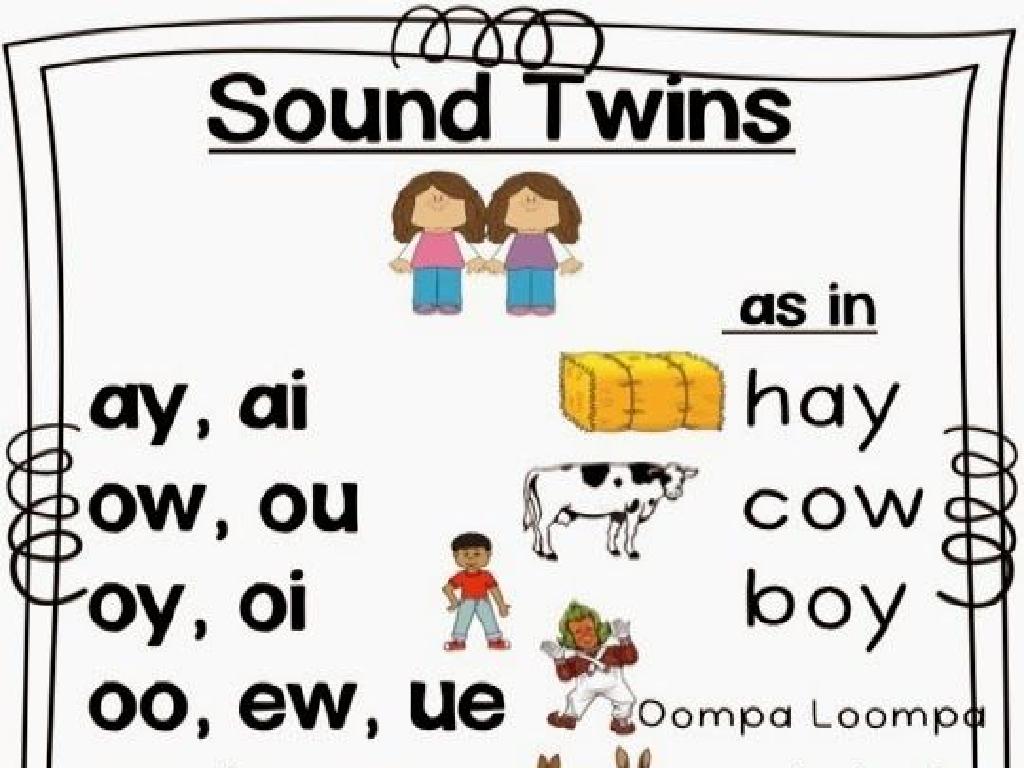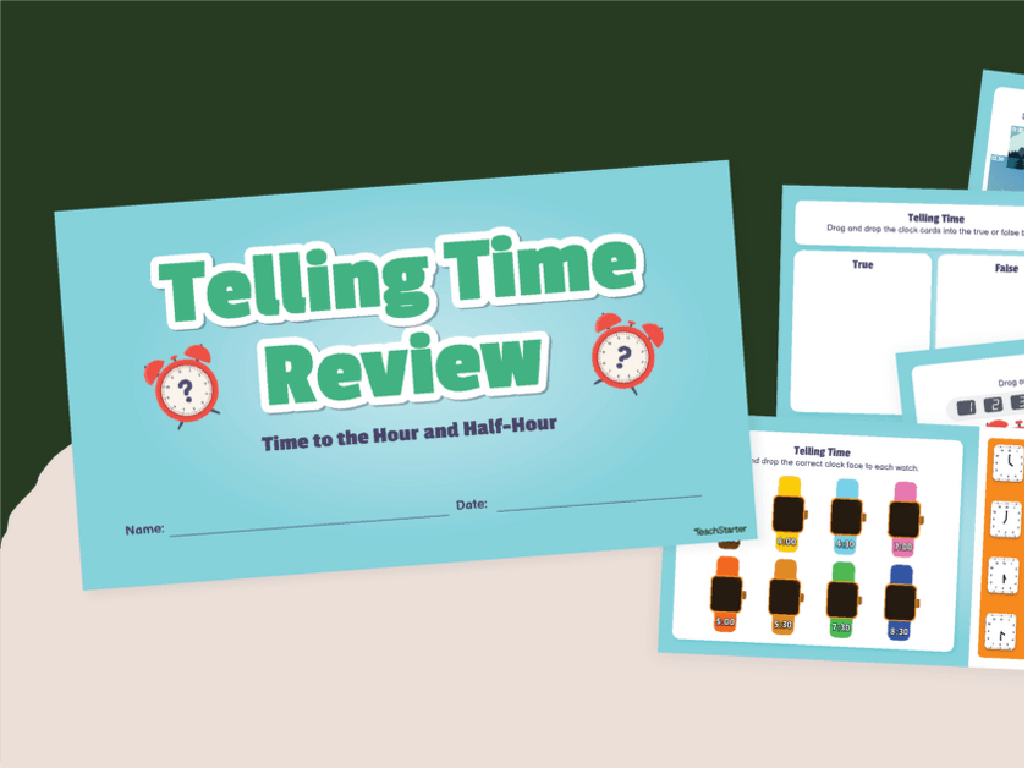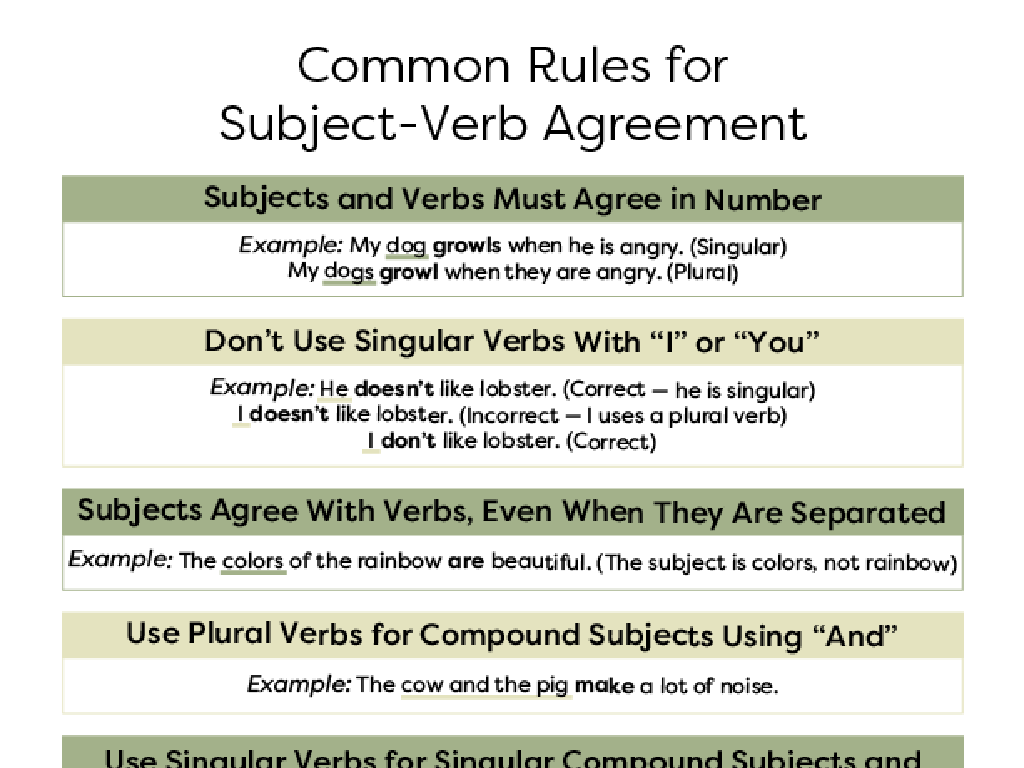Subtract A One-Digit Number From A Two-Digit Number - With Regrouping
Subject: Math
Grade: Second grade
Topic: Subtraction: Two Digits
Summary: This engaging second-grade math lesson focuses on subtracting a one-digit number from a two-digit number using regrouping. Students learn to borrow from the tens place when the top digit is smaller, ensuring accurate subtraction. Through hands-on examples, class practice, and game-based activities like Subtraction Bingo, children build strong regrouping skills. The lesson encourages continual practice and offers strategies to master two-digit subtraction with confidence and fun.
Please LOG IN to download the presentation. Access is available to registered users only.
View More Content
Welcome to Subtraction: Regrouping Adventure
– Subtraction is like taking away
– Subtract with bigger numbers
– Bigger numbers need more steps to subtract
– Learn a special method: regrouping
– Regrouping helps when you can’t subtract smaller from bigger
– Practice makes perfect
– We’ll do fun activities to learn regrouping
|
This slide introduces second-grade students to the concept of subtraction with regrouping. Begin by explaining subtraction as the process of taking away numbers from a larger number. Emphasize that sometimes, with bigger numbers, we need to take extra steps to subtract, especially when the top number is smaller than the bottom number in a column. Introduce ‘regrouping’ as a special method to make subtraction possible in these cases. Plan to engage the students with hands-on activities where they can practice regrouping with physical objects or drawings, and gradually move on to abstract numbers. Ensure to provide plenty of examples and encourage students to ask questions throughout the lesson.
Understanding Subtraction with Regrouping
– Subtraction means taking away
– It shows how many are left
– Example: 5 apples – 2 eaten
– If you start with 5 and eat 2, you have 3 apples left (5 – 2 = 3)
– Regrouping in subtraction
– Sometimes you need to ‘borrow’ from the next column
|
This slide introduces the basic concept of subtraction as taking away and finding out what remains. Use the simple example of having 5 apples and eating 2 to illustrate this point. Then, transition to explaining regrouping, which is a technique used when the top number in a column is smaller than the bottom number. Emphasize that regrouping helps us to subtract correctly when we can’t take a larger number from a smaller one. For instance, in 52 – 24, we need to regroup because we can’t take 4 from 2. Prepare to demonstrate this with more examples and ensure students understand the concept of ‘borrowing’ from the next column.
Subtracting Without Regrouping
– Review simple subtraction
– Recall how to subtract smaller numbers
– Example: 7 minus 3 equals 4
– 7 – 3 is easy, just count down from 7 to 4
– Practice subtraction together
– We’ll solve some problems as a class
– Understand without regrouping
– Learn when we don’t need to borrow from the next column
|
Begin the lesson by reviewing the concept of simple subtraction, ensuring that students are comfortable with subtracting single-digit numbers. Use straightforward examples like 7 – 3 to illustrate the process. Engage the class by working through several problems together on the board, encouraging participation and answering any questions that arise. Emphasize the concept of ‘without regrouping’ by explaining that sometimes we don’t need to borrow from the next column of numbers. This will set a foundation for when regrouping is introduced in future lessons. Provide additional practice problems for students to work on individually or in small groups to reinforce the concept.
When Do We Need Regrouping?
– Top number smaller than bottom number
– Borrow from the next column
– If you have 23 – 5, borrow from the tens place
– Regrouping makes subtraction possible
– Regrouping: 13 in ones place, 1 less in tens place
– Practice with examples
– Try 52 – 6 and show how to regroup
|
This slide introduces the concept of regrouping, a fundamental skill in subtraction when the top number in a column is smaller than the bottom number. Explain that ‘borrowing’ is taking one from the next column over (the tens place) to make the top number larger. Emphasize that regrouping allows us to subtract numbers that we otherwise couldn’t. Provide clear examples, such as subtracting 5 from 23, and walk through the steps of borrowing from the tens place. Encourage students to practice with several examples and ensure they understand the concept before moving on. The goal is for students to become comfortable with regrouping so they can apply it to more complex subtraction problems.
Steps to Regroup in Subtraction
– Check ones place for subtraction
– Can we subtract the smaller number from the larger one without needing extra?
– Borrow from tens if needed
– If ones in the first number are less, get 10 more by taking from the tens.
– Subtract ones, then tens
– After regrouping, subtract ones first and then the tens place.
– Practice with examples
|
This slide introduces the concept of regrouping, a key skill in subtraction when dealing with two-digit numbers. Start by looking at the ones place to determine if subtraction can be done without borrowing. If the ones digit in the first number is smaller than the second, we need to regroup by borrowing from the tens place. Explain that borrowing means taking one ten and turning it into ten ones. Then, proceed to subtract the ones place followed by the tens place. Use examples like 52 – 15, where students will need to regroup to subtract 5 from 2 in the ones place. Provide several practice problems and encourage students to explain the process of regrouping in their own words.
Let’s Try an Example: Subtract with Regrouping
– Begin with 23 – 5
– Regroup since 3 is less than 5
– Borrow 1 ten to make 13 in the ones
– Subtract 5 from 13 in the ones
– Now, 13 – 5 equals 8
– Tens place is now 1 less
– Instead of 2 tens, we now have 1 ten
|
This slide is designed to demonstrate the concept of regrouping when subtracting a one-digit number from a two-digit number. Start by showing the number 23 and explain that we cannot subtract 5 from 3 in the ones place. Introduce the concept of regrouping by borrowing 1 ten and turning it into 10 ones, which we add to the 3 to make 13. Now we can subtract 5 from 13, leaving us with 8 in the ones place. Remind students that since we borrowed 1 ten, we only have 1 ten left in the tens place. The answer is 18. Use visual aids like blocks or drawings to help students understand the process of regrouping. Prepare to guide students through several examples and provide hands-on practice with manipulatives if possible.
Practice Time: Let’s Subtract with Regrouping!
– Solve: 23 – 6
– Think: If I only have 3 ones, how can I take away 6?
– Solve: 34 – 8
– Think: If I only have 4 ones, how can I take away 8?
– Remember to regroup when needed
– Share your answers with the class
|
This slide is designed for practice in subtracting one-digit numbers from two-digit numbers with a focus on regrouping. Start by explaining that sometimes we don’t have enough ones to subtract, and we need to ‘borrow’ from the tens. Work through the problems as a class, step by step, ensuring that students understand the concept of regrouping. Encourage students to use manipulatives like base-ten blocks or draw pictures to visualize the process. After solving the problems, ask students to share their answers and explain the steps they took to get there. This will reinforce their understanding and allow you to assess their grasp of the concept.
Activity: Subtraction Bingo
– Play Bingo with subtraction problems
– Solve and cover the answer on your card
– Aim for a full row to win
– Practice regrouping skills
– Remember to borrow from the next column if needed
|
This interactive activity is designed to help second graders practice subtraction with regrouping in a fun and engaging way. Prepare Bingo cards with answers to subtraction problems that require regrouping. Explain to the students how to solve a subtraction problem by borrowing from the tens place when the top number in the ones place is smaller than the bottom number. During the game, call out subtraction problems instead of numbers. As students solve the problems, they will cover the corresponding answers on their Bingo cards. The first student to cover a full row horizontally, vertically, or diagonally wins the game. Provide several rounds of play to allow multiple winners, and consider small prizes for motivation. This activity reinforces mathematical concepts while also encouraging attention and quick problem-solving.
Subtraction Success: Keep Practicing!
– Congratulations on learning regrouping!
– Practice is key to perfection
– The more you practice, the better you’ll get!
– Keep practicing to become a star
– Try different problems to master subtraction
– You’re doing great!
|
This slide is meant to congratulate the students on their hard work learning how to subtract with regrouping. It’s important to encourage them to continue practicing, as this will help solidify their understanding and improve their skills. Remind them that learning math is like learning a sport or an instrument – the more they practice, the better they become. Offer them a variety of practice problems and perhaps some fun math games to keep their interest high. Celebrate their progress so far and motivate them to keep going. You might also want to send them home with some additional practice worksheets or recommend some online math games that focus on subtraction with regrouping.





